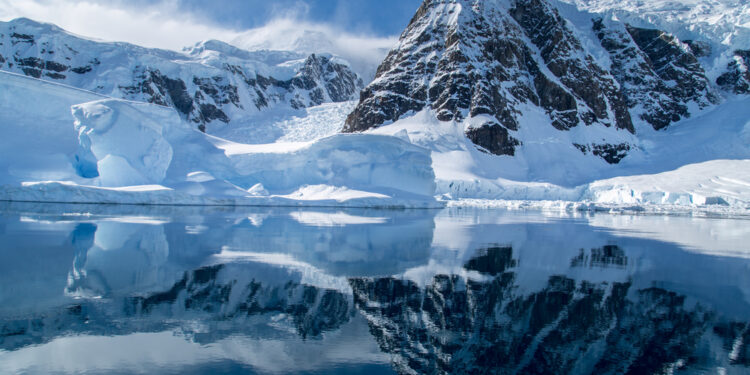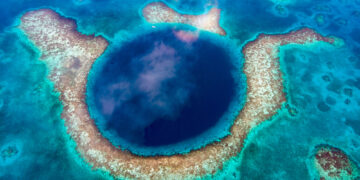Nestled in the icy expanse of Antarctica lies a natural phenomenon that has captivated scientists and explorers for decades. Known as the Blood Falls, this otherworldly, red waterfall cascades from the Taylor Glacier, leaving a trail of crimson amidst the white frozen landscape. The source of this eerie waterfall is ancient, iron-rich seawater that, when exposed to air, undergoes a dramatic transformation. In this article, we will delve into the history, science, and mystery surrounding the Blood Falls, shedding light on its enigmatic beauty.
Discovery and Early Research
The Blood Falls were first discovered in 1911 by Australian geologist and explorer, Thomas Griffith Taylor, as part of the Terra Nova Expedition. At the time, it was believed that the red coloration was due to red algae, a theory that persisted until the mid-20th century. However, as more researchers journeyed to the remote site and conducted scientific investigations, it became clear that the unique coloration was not the result of living organisms but rather a geochemical process.
The Science Behind the Blood Falls
The source of the Blood Falls is an ancient, iron-rich brine that has been trapped beneath the Taylor Glacier for over five million years. This subglacial reservoir contains a unique ecosystem that has been isolated from the Earth’s atmosphere, resulting in a hypersaline, oxygen-depleted environment. The brine is rich in iron, which gives it a yellowish hue when in its reduced state beneath the glacier.
The red waterfall emerges when the iron-rich brine seeps through fissures in the glacier and comes into contact with the air. Upon exposure to oxygen, the iron undergoes a process called oxidation, which transforms it from a reduced to an oxidized state. The oxidized iron forms a compound called ferric hydroxide, which has a vibrant red color. This is the same process that occurs when iron rusts, and it is responsible for the striking hue of the Blood Falls.
A Unique Subglacial Ecosystem
The Blood Falls is not only a stunning visual spectacle, but it also provides a rare glimpse into a hidden world beneath the Antarctic ice. The subglacial brine that feeds the falls harbors an isolated microbial ecosystem that has evolved in complete darkness and extreme conditions for millions of years. Scientists have found that these microorganisms are capable of surviving without oxygen, relying instead on chemical reactions involving sulfur and iron to generate energy.
The study of these extremophiles – organisms that thrive in extreme environments – offers valuable insights into the limits of life on Earth and the potential for life on other planets. The discovery of this unique ecosystem also challenges our understanding of what is necessary for life, expanding our knowledge of the diverse conditions in which organisms can survive and flourish.
Climate Change and the Future of the Blood Falls
As the Earth’s climate continues to change, the future of the Blood Falls and the unique ecosystem it supports is uncertain. The Antarctic continent is experiencing some of the most rapid warming on the planet, with melting ice contributing to rising sea levels and the loss of crucial habitats for numerous species. The Taylor Glacier, like many glaciers around the world, is retreating at an alarming rate.
As the glacier recedes, the subglacial brine reservoir that feeds the Blood Falls may become more vulnerable to changes in temperature and pressure, potentially impacting the delicate balance that has allowed the unique ecosystem to evolve over millions of years. The Blood Falls serves as a stark reminder of the importance of understanding and mitigating the impacts of climate change on our planet’s most fragile and unique environments.
Conclusion
The Blood Falls of Antarctica remains one of the most enigmatic and captivating natural phenomena in the world. The Blood Falls of Antarctica remains one of the most enigmatic and captivating natural phenomena in the world. Its striking red coloration and the hidden ecosystem it harbors beneath the ice offer a rare glimpse into the extreme conditions under which life can persist. As climate change continues to reshape our planet, the Blood Falls stands as a symbol of the need to protect and study our Earth’s most fragile and unique environments, so that future generations can continue to marvel at their beauty and learn from their secrets.







